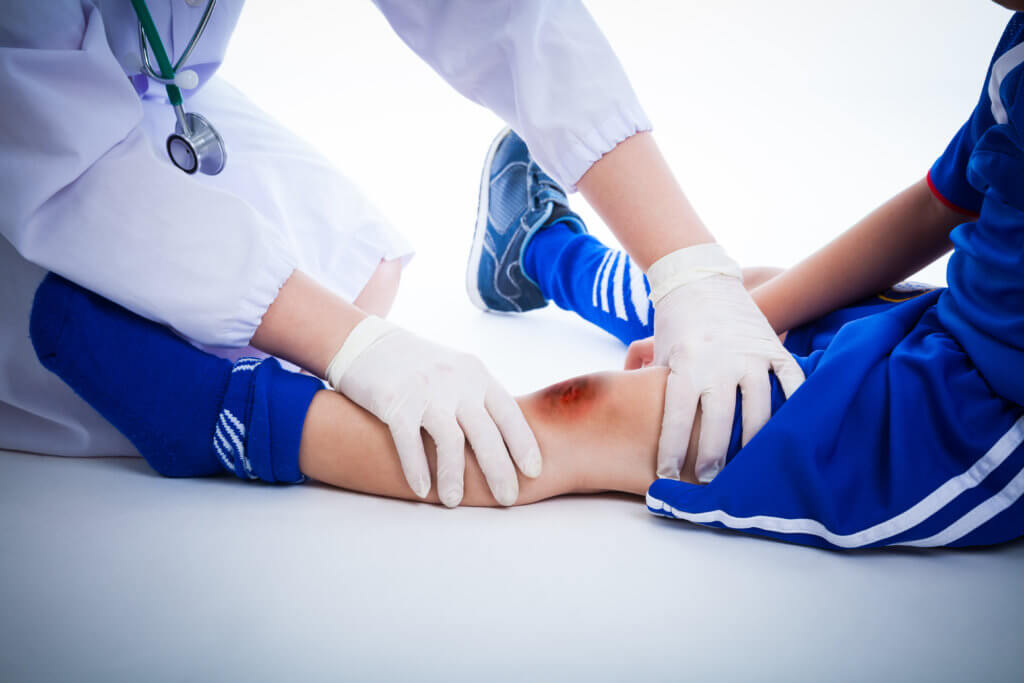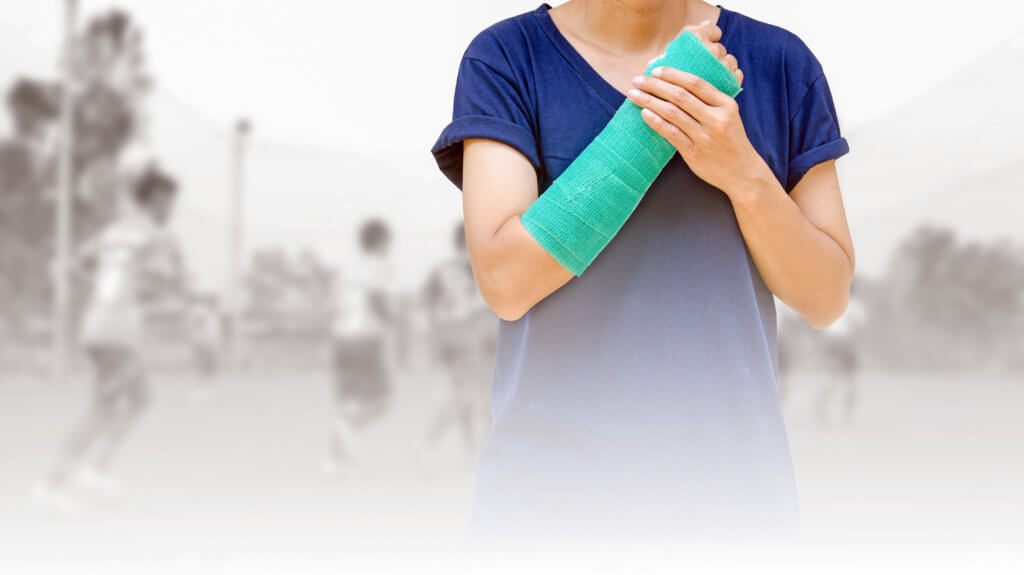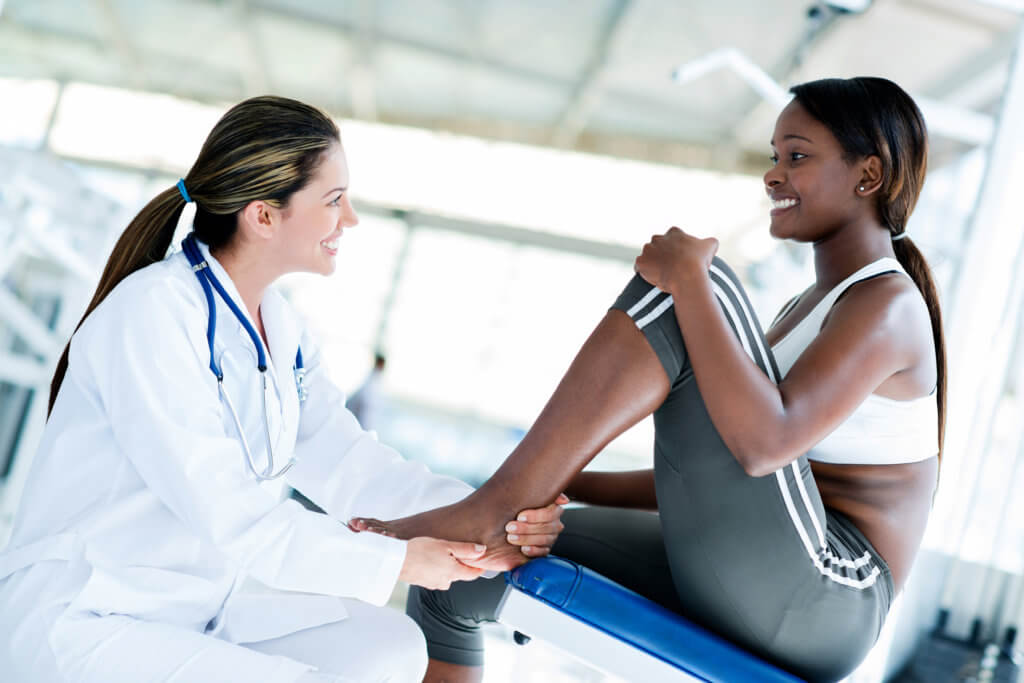Avoid Back-to-School Month Sports Injuries (In 7 Steps)
Back-to-school month for most schools is in September. As school and club sports return, many student-athletes are gearing up for a new season. But, with a long absence from organized sports, it’s important to ease back into a sport of choice to reduce the likelihood of an injury.
Even before the world was forced into a long hiatus from sports, sports-related injuries were more common than most people think. In fact, according to the National Institute of Arthritis and Musculoskeletal and Skin Diseases, upwards of 2.6 million children ages 19 and under were treated in emergency departments for sports-related injuries (2015-2016.)
At South Island Orthopedics, our board-certified pediatric orthopedic specialist is dedicated to addressing sports-related injuries. From sprains and strains to stress fractures and growth plate fractures, our pediatric orthopedic experts have the skills and compassion perfectly suited to treating the specific needs of children and getting them back out onto the field as soon as possible.
To encourage a safe start to the school year, our SIO pediatric team has put together this back-to-school sports-injury prevention guide.
What Are the Most Common School Sports Injuries?
 While children of all ages can experience any number of sports-related injuries, the highest rates of injury occur within contact sports. One CDC study reported that American football ranks highest in injuries with 4.36 injuries per 1,000 athlete encounters. Additional data concluded that more injuries occurred during competition versus during practice.
While children of all ages can experience any number of sports-related injuries, the highest rates of injury occur within contact sports. One CDC study reported that American football ranks highest in injuries with 4.36 injuries per 1,000 athlete encounters. Additional data concluded that more injuries occurred during competition versus during practice.
As for student-athlete injuries, some of the most common include:
- Sprains and strains. A sprain occurs when a ligament is injured. A strain results from an injury to the muscle or tendon. Children’s ankles, knees, and wrists are particularly susceptible to sprains. Both a sprain or strain can occur either suddenly—from a sports collision or fall—or over time due to overuse.
If your child experiences a sprain or strain, symptoms can include:- Pain
- Swelling
- Bruising
- Weakness
- Warmth in the injured area
- Pain and difficulty moving the injured area
- Treatment: Depending on the type and severity of diagnosis, a sprain or strain may be treated with:
- Pain medication (non-steroidal, anti-inflammatory drugs, NSAIDs)
- Rest, ice, compression, and elevation (RICE method)
- Activity modification and restrictions
- Splint or cast
- Crutches
- Physical therapy
- In more severe cases—when a ligament, tendon, or muscle is torn—surgery may be required to repair the damage.
- Fractures. Some of the most common types of fractures in children include a broken collarbone, shoulder, arm, elbow, wrist, hip, leg, foot, or ankle. When too much pressure is applied to
 the bone—as can occur in contact sports injuries in football, basketball, and soccer—a fracture can occur.
the bone—as can occur in contact sports injuries in football, basketball, and soccer—a fracture can occur.
Symptoms of a fracture include:- Pain
- Swelling
- Deformity in or around the area of injury
- Bruising, redness, and warmth in the area of injury
- Pain and difficulty moving the injured area
- Treatment: Depending on the type and location of a fracture, treatment may include:
- Immobilization of the affected area with a splint, cast, or boot
- Traction (continuous pulling motion to enable the ends of the fractured bone to align and heal properly.)
- Medication (NSAIDs and other medication designed to reduce muscle spasms.)
- Severe fractures may require surgery
- Growth Plate Fractures. Most growth plates are located on the long bones between the shaft of the bone (metaphysis) and the end of the bone (epiphysis). According to the American Academy of Orthopaedic Surgeons, 15% to 30% of all fractures in children are growth plate fractures. And, one-third of these types of injuries occur during football, basketball, or gymnastics, happening more frequently in boys than girls (due to girls finishing the growing process faster than boys.)
Growth plate fracture symptoms include:- Swelling
- Tenderness and warmth in the area of the bone near the joint
- Difficulty with mobility and placing pressure on the limb
- Deformity in or around the area of injury
- Treatment: Most growth plate fractures are treated utilizing the following methods:
- Immobilization of the affected area with a splint or cast
- Medication (NSAIDs to reduce pain and inflammation)
- In some cases, open reduction and internal fixation surgery may be needed to properly align and heal the bone.
- Contusions (bruises). Bruises are the second most common sports-related injury after strains. The bluish hue you see when your child gets a bruise is from damaged blood vessels. Bruises can also be accompanied by a hematoma, a lump resulting from a collected pool of blood in the area of damage.
- Treatment: Often, alternating cold (ice packs) and heat can help alleviate contusion-related pain and swelling.
How to Avoid Sports-Related Injuries
 The good news: most sports-related injuries are preventable. The better news: we can provide preventative strategies to help keep children safe. Whether prepping for fall sports like football, soccer, or cross country—or skateboarding, gymnastics, recreational basketball, and other favorite athletic activities, following a few simple guidelines can help your child avoid back-to-school-month injuries.
The good news: most sports-related injuries are preventable. The better news: we can provide preventative strategies to help keep children safe. Whether prepping for fall sports like football, soccer, or cross country—or skateboarding, gymnastics, recreational basketball, and other favorite athletic activities, following a few simple guidelines can help your child avoid back-to-school-month injuries.
- Get a physical examination. It’s best to launch into a sport—especially after a long absence—slowly, after ensuring your child’s physical health is in proper condition. Visiting with a physician (preferably an orthopedic specialist) can help flag any potential issues.
- Wear the right kind of protective gear. To help provide maximum protection from injury, having the right equipment and protective gear specific to the sport your child is playing is paramount. Football players, for example, should have helmets; shoulder, hip, tail, and knee pads; thigh guards, and mouth guards. Soccer players should have shin guards, mouth guards, and properly fitted cleats. Check with the coach to ensure your child has all the necessary gear.
- Know and follow the rules of the game. Knowledge and adherence to the guidelines of practice and competition can help reduce the likelihood of injury caused by incorrect form or improper use of equipment.
- Warm-up before practice and games. Warm-ups prevent injury by increasing the body’s overall temperature, improving blood flow to the muscles, and loosening your joints.
- Avoid practicing or playing sports when in pain or experiencing fatigue. Pain is an indication of injury or overuse. Being tired can raise the risk of error, and therefore the chance of injury. Pushing through pain or fatigue can be dangerous and potentially worsen an existing injury or cause a new—or more severe—sports-related injury.
- Remain hydrated. Staying hydrated during sports activity ensures that the body doesn’t overheat and protects muscles from excess fatigue, lowering the risk of injury.
- Make sure your child abstains from single-sport specialization. Playing a single sport all year dramatically increases the likelihood of a child experiencing an overuse injury. Encourage your child to take intermittent breaks from their preferred sport, engage in other types of athletic activity, and limit how many teams they play on in one season.
When Back to School Sports Injuries Happen
Even the most vigilant of young athletes can still experience sports-related injuries. And, when they do happen, you want your child to receive the best care possible. That’s why, in addition to providing the highest quality orthopedic care during regular appointment hours, SIO also offers urgent care services.
Both the SIO Woodbury and Cedarhurst locations have urgent care options for patients living anywhere from Long Island and Brooklyn to Queens, Manhattan, and surrounding areas. We hope that your child has a safe and successful back-to-school month free of injuries. But should they experience an injury, rest assured that SIO pediatric orthopedic specialists will use state-of-the-art technology and advanced approaches for precision diagnosis and personalized treatment.
To learn more about youth sports-related injury prevention and treatment or more about our urgent care services, schedule a visit with one of our pediatric experts.
Posted in: Awareness Month
